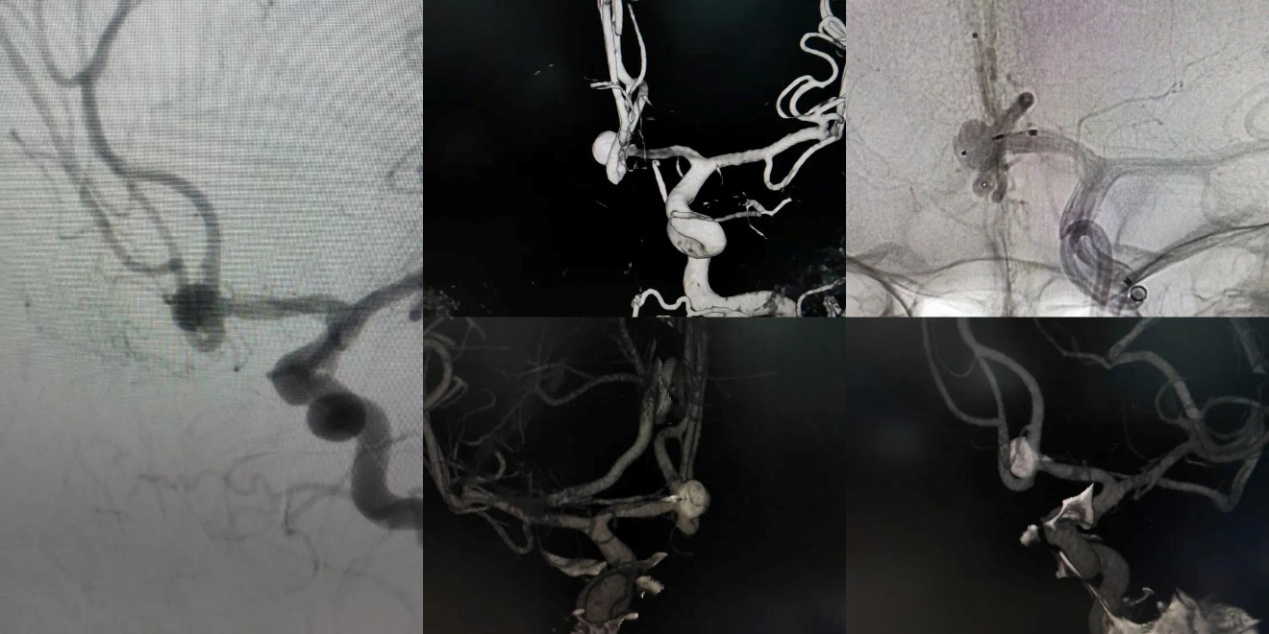Recently, the teams of Professor Han Jianfeng and Professor Yu Jia from Department of Neurology of the First Affiliated Hospital (FAH) of Xi'an Jiaotong University (XJTU) successfully applied WEB17 (Woven EndoBridge 17) device in the treatment of intracranial aneurysm for the first time, which is also the first case of WEB17 in clinical application in northwest China and indicates that the neurointerventional team from Department of Neurology of FAH occupies a leading position in the field of interventional treatment of intracranial aneurysms across the whole country and northwest region.
A female 51-year-old patient was diagnosed with the anterior communicating artery aneurysm after head MRA in a local hospital, and was admitted to Department of Neurology of FAH due to "anterior communicating artery aneurysm".
After admission, the patient underwent cerebral angiography, confirming the diagnosis of anterior communicating artery aneurysm. The tumor height was 4.5 mm, tumor width was 5.9 mm and tumor neck was 6.0 mm, respectively. After comprehensive consideration of the patient's age, aneurysm size, location and morphology and alternative factors, interventional therapy was recommended to prevent the life-threatening risk caused by the aneurysm rupture. After informed consents were obtained from the patient and family members, explicit preoperative examination, careful preoperative consultation and full drug preparation, Professor Han Jianfeng and Professor Yu Jia led team members of Liu Fude, Sun Peng and Chen Chen to place WEB17 device into the patient under general anesthesia under intimate cooperation from Department of Anesthesiology and Perioperative Medicine and Interventional Operation Room. The surgery was successfully performed. Postoperatively, the patient was transferred to Department of Neurology ICU for close observation and returned to general ward the next day. She was discharged after recovery.

WEB device can be applied at the bifurcation of the middle cerebral artery, the end of the internal carotid artery, the anterior communicating artery complex or the top of the basilar artery, especially for endovascular treatment of saccular wide-necked intracranial vascular bifurcation aneurysms with a diameter of 3 to 10 mm and a neck size of ≥4 mm or a neck ratio of >1 and <2, respectively. The principle of treating intracranial aneurysms with WEB device is as follows: after being placed in the aneurysm sac, the WEB device adheres to the tumor wall, blocks the neck of the aneurysm, changes blood flow in the aneurysm neck, and induces thrombosis in the aneurysm, thereby achieving the purpose of curing the aneurysm.
Since 2022, the neurointerventional team led by Professor Han Jianfeng and Professor Yu Jia has completes the first case of FRED dense-mesh stent implantation, the first case of Surpass Evolve dense-mesh stent implantation, the first case of Pipeline Shield dense-mesh stent implantation and the first case of domestic Kirin dense-mesh stent implantation in northwest China. The application of WEB17 device serves as a more rational treatment, which enhances surgical efficiency and safety.